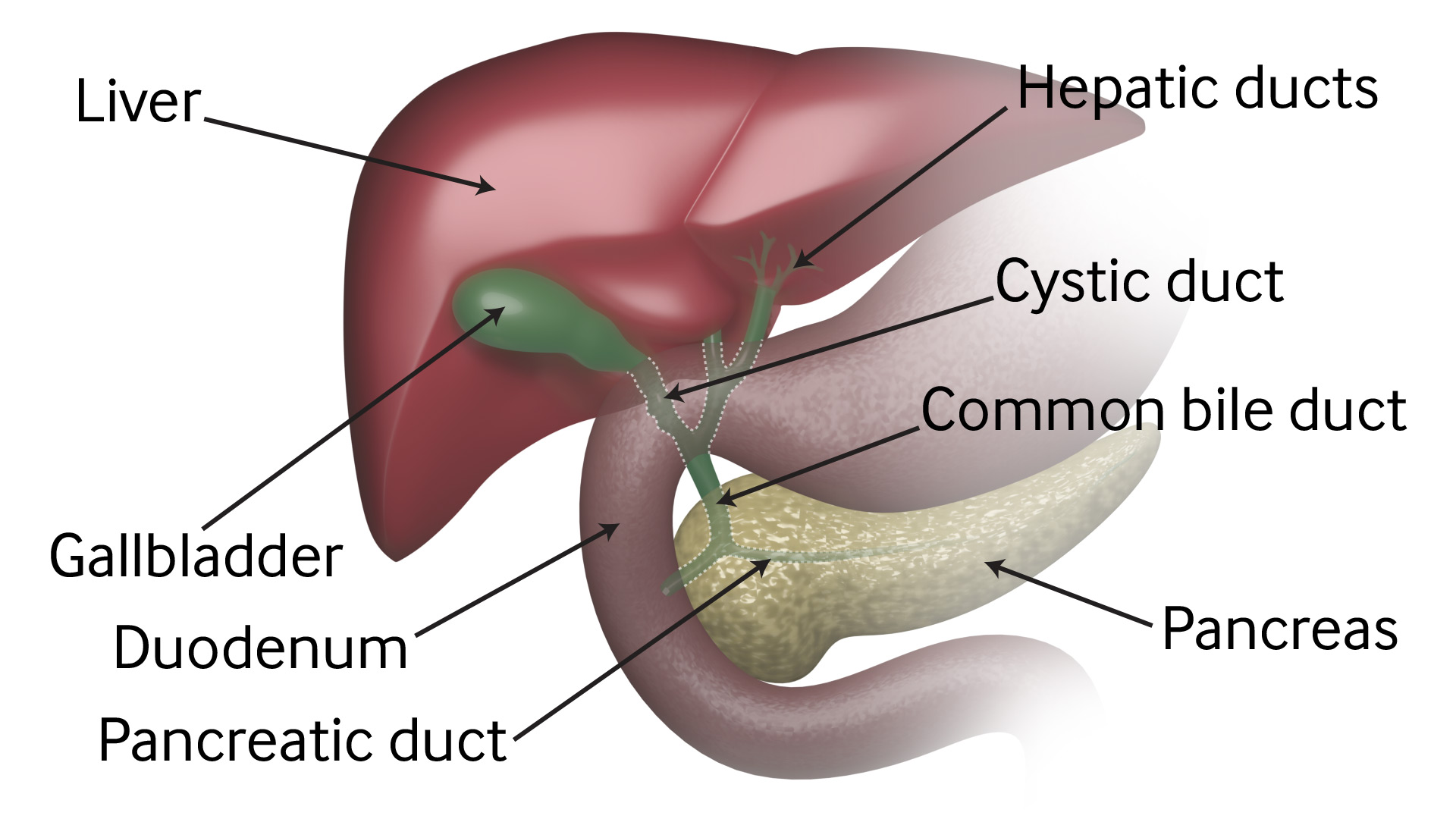Acute Cholecystitis
OVERVIEW | CAUSES | RISK FACTORS | SYMPTOMS | COMPLICATION | DIAGNOSIS | TREATMENT | PREVENTION | REFERENCES

OVERVIEW
Acute cholecystitis is an inflammation of the gallbladder. The gallbladder is an organ that sits below your liver and helps your body digest fat.
Cholecystitis can become very severe and in most cases requires immediate medical attention. See your doctor as soon as possible if you think you have acute cholecystitis.
This condition can become chronic if it persists for a prolonged period of time, or if you’re having recurring symptoms from the inflammation.
CAUSES
The gallbladder is an organ that sits below the liver. It stores bile, which is produced in the liver. Your body uses bile to digest fats in the small intestine.
Acute cholecystitis occurs when bile becomes trapped in the gallbladder. This often happens because a gallstone blocks the cystic duct, the tube through which bile travels into and out of the gallbladder. When a stone blocks this duct, bile builds up, causing irritation and pressure in the gallbladder. This can lead to swelling and infection.
Other causes include:
- Serious illnesses, such as HIV or diabetes
- Tumors of the gallbladder (rare)
RISK FACTORS
Some people are more at risk for gallstones. Risk factors include:
- Being female
- Pregnancy
- Hormone therapy
- Older age
- Being Native American or Hispanic
- Obesity
- Losing or gaining weight rapidly
- Diabetes
Sometimes, the bile duct becomes blocked temporarily. When this occurs repeatedly, it can lead to long-term (chronic) cholecystitis. This is swelling and irritation that continues over time. Eventually, the gallbladder becomes thick and hard. It does not store and release bile as well as it did.
SYMPTOMS
The most common sign that you have acute cholecystitis is abdominal pain that lasts for several hours. This pain is usually in the middle or right side of your upper abdomen. It may also spread to your right shoulder or back.
Pain from acute cholecystitis can feel like sharp pain or dull cramps. It’s often described as excruciating.
Other symptoms include:
- Clay-colored stool
- Vomiting
- Nausea
- Fever
- Yellowing of your skin and the whites of your eyes
- Pain, typically after a meal
- Chills
- Abdominal bloating
COMPLICATIONS
Untreated, cholecystitis may lead to any of the following health problems:
- Empyema (pus in the gallbladder)
- Gangrene
- Injury to the bile ducts draining the liver (may occur after gallbladder surgery)
- Pancreatitis
- Perforation
- Peritonitis (inflammation of the lining of the abdomen)
DIAGNOSIS
The symptoms of acute cholecystitis can resemble many other illnesses. Your doctor will want to know about your medical history as well as your symptoms. They’ll probably check your abdomen for swelling or tender areas. They may order additional tests, such as the following:
- Abdominal ultrasounds use sound waves to create an image of your organs. This is the most commonly ordered imaging test that’s used to diagnose cholecystitis.
- Hepatobiliary scintigraphy is a procedure that creates an image of the upper portion of your small intestine, liver, gallbladder, and bile ducts.
- Cholangiography uses dye injected into your bile ducts to show the gallbladder and bile ducts on an X-ray.
- CT scans are computerized images used to create images of your internal organs.
Your doctor may need to run more tests if you’ve been diagnosed with acute cholecystitis. These tests may include a liver function test and a complete blood count (CBC) test.
TREATMENT
Severe abdominal pain may need immediate treatment. You should always see your doctor if you begin to have severe, unexplained abdominal pain.
Your doctor may recommend hospitalization so that you can be monitored. You may be asked to fast, because your gallbladder is part of your digestive system, and fasting allows the gallbladder to rest. You may get intravenous (IV) fluids to prevent dehydration. Your doctor will most likely prescribe pain medications and antibiotics to minimize your abdominal pain and fight infection.
Your doctor may recommend surgery to remove your gallbladder if the cholecystitis keeps recurring. This is called a cholecystectomy, which can be done laparoscopically or through open surgery.
You can still digest food normally without a gallbladder. Bile that normally flowed to your gallbladder will be redirected into your small intestine.
PREVENTION
You may be able to reduce your risk of developing acute or chronic cholecystitis by losing weight and eating a healthier diet. It’s believed that cholesterol plays a part in the formation of gallstones. You should avoid foods that are high in fat and cholesterol.
Being overweight increases the amount of cholesterol in your bile. This raises your chances of developing gallstones. If you choose to lose weight to reduce the risk of gallstones, it’s best to do so gradually. Rapid weight loss may upset the delicate bile chemistry in your body. This can increase your chances of developing gallstones.
Talk to your doctor if you’re concerned about your weight. They’ll help you come up with an effective weight loss plan.






































































































